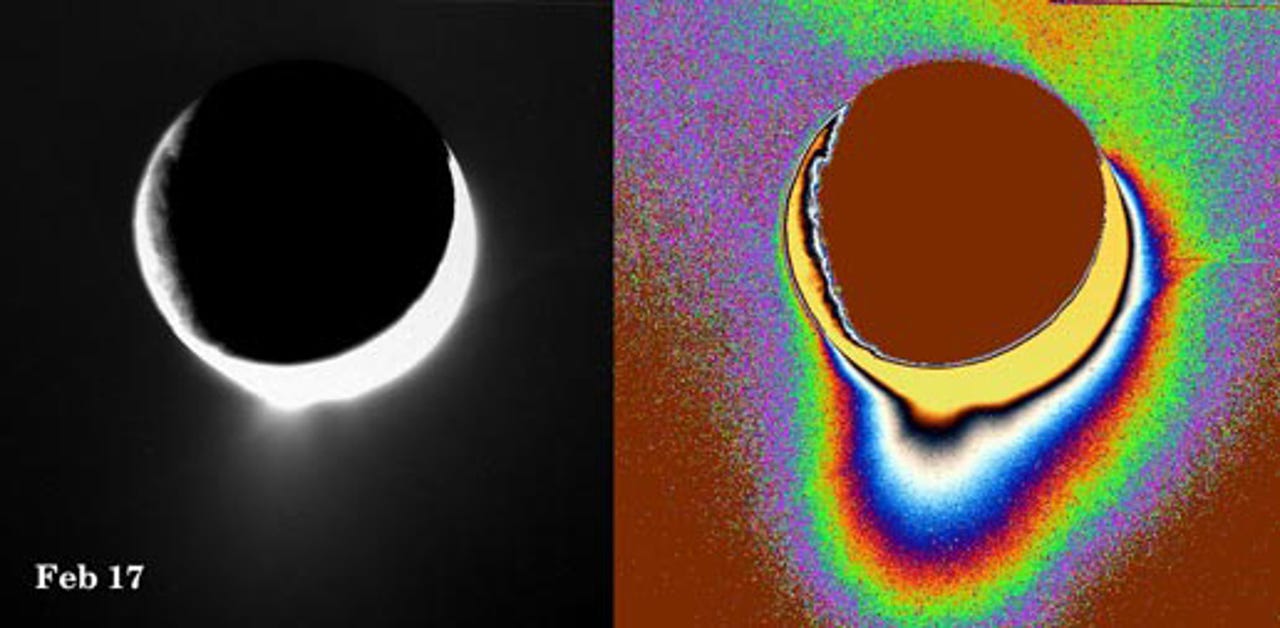Images: Water on a Saturn moon?


Plumes
Plumes of icy material shooting above the southern polar region of Saturn's moon Enceladus. Captured by the Cassini spacecraft in February, images like these are being analyzed by scientists seeking to explain how the plumes are produced. As reported in the journal Science on Friday, imaging scientists believe that the plumes are geysers erupting from pressurized subsurface reservoirs of liquid water above 32 degrees Fahrenheit (273 degrees Kelvin, 0 degrees Celsius). The monochrome view is shown here, along with a color-coded version on the right that reveals a fainter and much more extended portion of the plume.
Backlit plumes
Recent Cassini images show the fountainlike plumes of fine spray that tower over Enceladus' south polar region. This image, backlit by the sun, was taken looking more or less broadside at "tiger stripe" fractures observed in earlier Enceladus images.
Craters
Ancient craters on Enceladus remain somewhat pristine in some locales but have clearly relaxed in others. Fractures across the southern hemisphere likely were caused by a change in the moon's rate of rotation and the consequential flattening of the moon's shape. The south polar terrain is marked by a striking set of blue fractures and is encircled by a conspicuous chain of folds and ridges.
Plume model
The model shows how underground reservoirs of pressurized liquid water could fuel geysers that send jets of icy material into the skies above the moon's south pole. In the graphic, the vent to the surface pierces one of the "tiger stripe" fractures seen in Cassini views of the southern polar terrain.